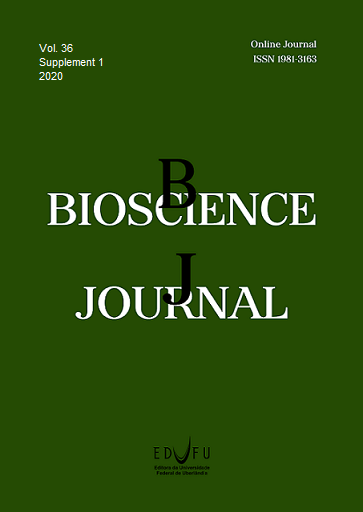Bioactive compounds in jamelão yogurt (Syzygium cumini L)
DOI:
https://doi.org/10.14393/BJ-v36n0a2020-54083Palavras-chave:
Antioxidants, Composition, Ionic gelation.Resumo
The jamelão fruit has been used in traditional Indian medicine and has recently attracted interest as a functional food, as it is rich in anthocyanins. Anthocyanins are of interest of the food industry due to their antioxidant power, attractive color and stability in acid-rich foods. This research used the gelation process with sodium alginate solution to obtain bioactive yogurt from the production of jamelão capsules added to natural yogurt. The proportion was 80% yogurt and 20% jellybean pulp capsules. The treatments were control yogurt (without the addition of jamelão capsules), jamelão capsules and bioactive yogurt (with the capsules). The objective was to study the antioxidant activity, physical-chemical, nutritional and microscopic stability of the product kept under refrigeration for 28 days at 4±1ºC. The addition of jamelão capsules in the yogurt changed the product's physical properties (increased humidity and decreased Brix and ash). There was an increase in the amount of phenols and anthocyanins, in addition to the antioxidant potential at 28 days of storage. The interior of the microcapsules was composed of a mesh structure through which the encapsulated material was distributed, as the capsules can be added to yogurt, to improve the antioxidant and nutritional capacity, which proves to be a promising and viable alternative.
Downloads
Downloads
Publicado
Como Citar
Edição
Seção
Licença
Copyright (c) 2021 Camila Thiara Gomes Carvalho, Alessandra Almeida de Castro Pagani, Ranulfo Combuca da Silva Junior, Magali Soares dos Santos Pozza

Este trabalho está licenciado sob uma licença Creative Commons Attribution 4.0 International License.






